Best Decks Post February 2023 Banlist!
Going into a brand new format is tough. Tearlament just got their best cards Banned and Limited, they truly got the Dragon Ruler Treatment! So now what? What deck do you play now the clear best deck is nowhere near as strong as it was. In this blog we are going to highlight the 5 top picks for the format.
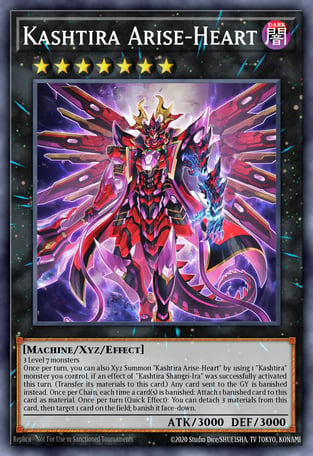
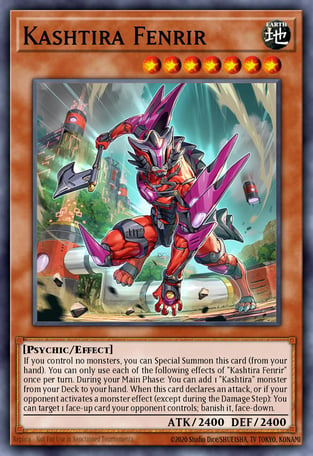
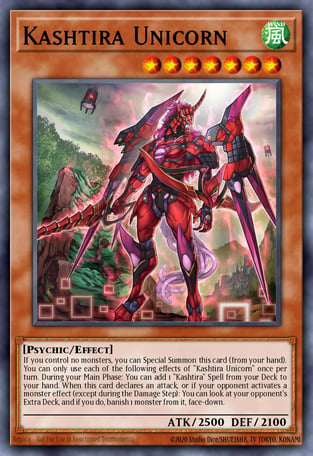
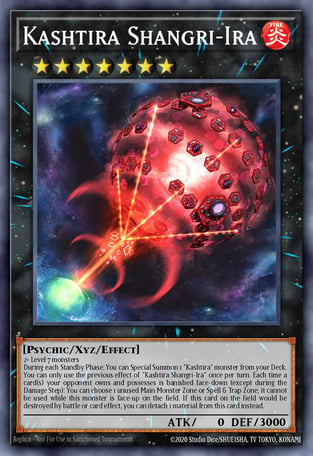
Kashtira
"Kashtira" is an archetype focused around primarily Level 7 Psychic monsters and banishing cards face-down. Most members of the archetype, excluding "Kashtira Riseheart", are Level 7 monsters able to Special Summon themselves if the player controls no monsters or by some other condition, such as with "Scareclaw Kashtira" and "Tearlaments Kashtira", are able to search cards while on the field, and can banish their opponent's cards (from various different locations) if they attack or if the opponent activates a monster effect. This banish playstyle is further emphasized through their original boss monster "Kashtira Shangri-Ira", a Rank 7 Xyz Monster with 0 ATK able to Special Summon more Kashtira monsters to the field and lockdown unused Main Monster Zones as well as Spell & Trap Zones each time an opponent's card in their possession is banished.
This Playing style would be further enhanced through the introduction of "Kashtira Riseheart", a Level 4 FIRE Warrior monster able to banish a "Kashtira" card from your Deck to banish the top 3 cards of the opponent's Deck, face-down, and become Level 7 itself for use in Xyz Summons. Their new offensive force is the Rank 7 "Kashtira Arise-Heart", a 3000 ATK monster able to be quickly Xyz Summoned once per turn using any 1 "Kashtira" monster on the field the same turn that "Shangri-Ira" used its effect and able to force any cards send to the GY to be banished instead as well as granting itself more materials to use 3 materials and banish any card on the field, face-down.
"Kashtira" Spell/Trap cards focus on summoning additional "Kashtira" monsters, and either banishing opponents' cards if the opponent activates a card of the same type, or activating an effect when they're banished themselves.

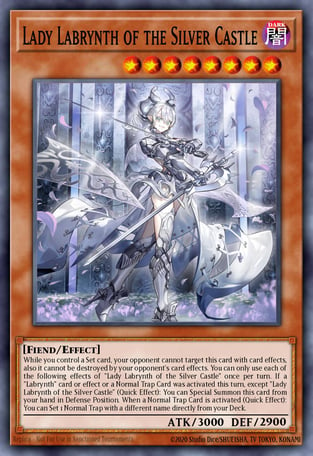
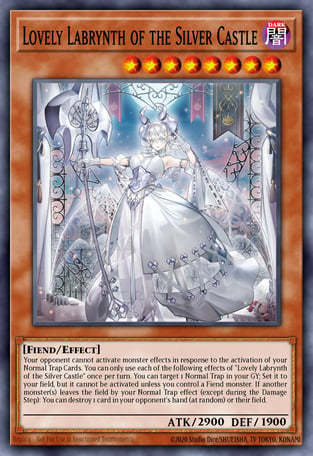
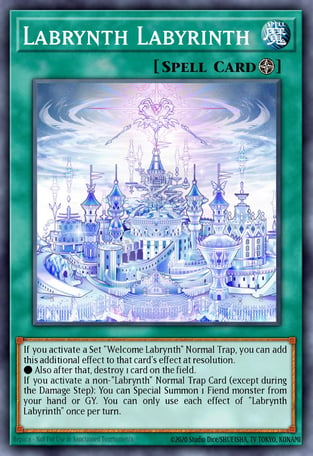
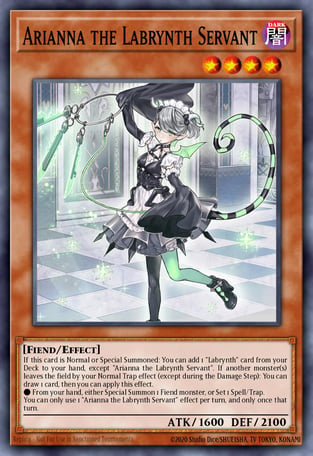
Labrynth
"Labrynth" is a Trap-focused archetype focusing on using Normal Trap Cards to remove monsters from the field, in order to activate Trigger Effects from archetypal cards.
If the player's field and GY is set up with these "Labrynth" cards, removing a single monster with a Normal Trap can trigger all of these Trigger Effects at once, generating a massive amount of advantage.
The key starter and engine card for the archetype is the archetypal Normal Trap "Welcome Labrynth", which Special Summons a "Labrynth" monster from the player's Deck, and can recover itself with its trigger effect for more Summons. Aside from generic searchers, it is also searchable in-archetype by "Labrynth Chandraglier", "Labrynth Stovie Torbie", and "Arianna the Labrynth Servant".
Aside from their Trigger Effects, "Labrynth" cards also feature effects that support non-"Labrynth" Normal Traps. This, combined with the fact that the archetype's own Normal Traps, "Farewelcome Labrynth", "Labrynth Barrage", and "Welcome Labrynth", are ineffective at removing monsters due to their restrictive conditions and effects (in the case of "Welcome Labrynth", it requires the archetype's Field Spell, "Labrynth Labyrinth", to be able to remove monsters), strongly encourages the player to use non-archetypal traps.

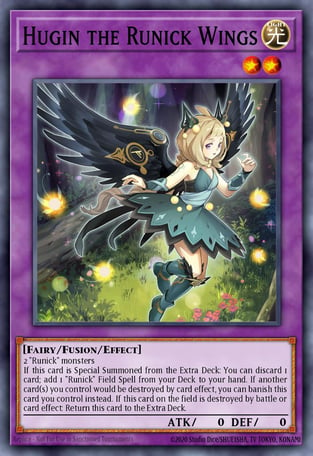
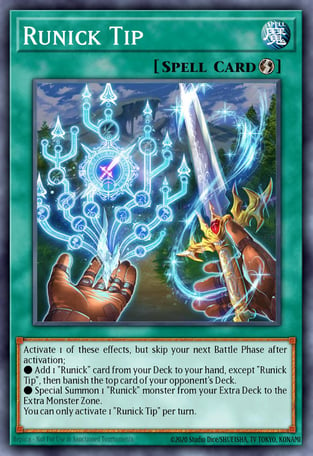
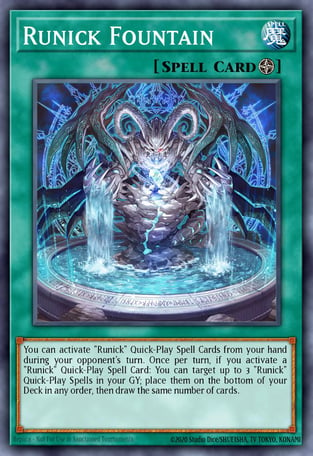
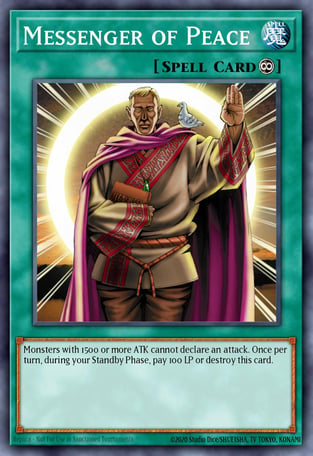
Runick
"Runick" is an archetype almost entirely made up of Spell Cards (especially Quick-Play Spells), with an exclusive focus on a Deck out victory condition. The archetype has no Main Deck monsters, only one monster with non-zero ATK (who cannot deal battle damage), and the effects of all its Quick-Play Spells cause the player to skip their next Battle Phase, forcing the archetype to entirely forgo combat to focus on Deck out.
All "Runick" Quick-Play Spells can be activated only once per turn, and each allows choosing between one of two effects: a unique effect that provides consistency/disruption/Deck milling and then banishes a varied number of cards from the top of the opponent's Deck, or a shared effect to Special Summon 1 "Runick" monster from the Extra Deck to the Extra Monster Zone. Activating either effect of a "Runick" Quick-Play Spell requires the player to skip their next Battle Phase.
The "Runick" Extra Deck monsters serve as the archetype's defensive strategy, providing additional resource searching or cycling, and some protection against battle or effects.
The key card to the archetype's resource loop is their Field Spell "Runick Fountain", which lets the player activate "Runick" Quick-Play Spells from the hand during the opponent's turn, and once per turn (during either player's turn) it can place up to 3 "Runick" Quick-Play Spells from the Graveyard to the bottom of the Deck and have the player draw that many cards.
Though "Runick Fountain" functions best when the archetype is played pure, the archetype's ability to easily Special Summon low-level Fusion Monsters also enables the Summoning of Synchro, Xyz, or Link Monsters requiring low-Level extenders if the archetype is hybridized with other engines.

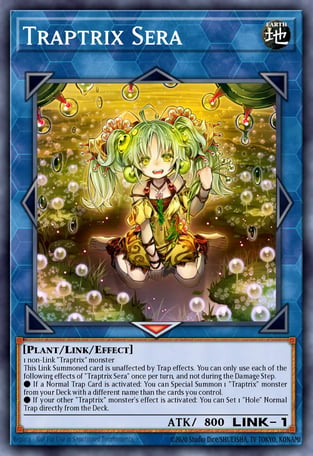
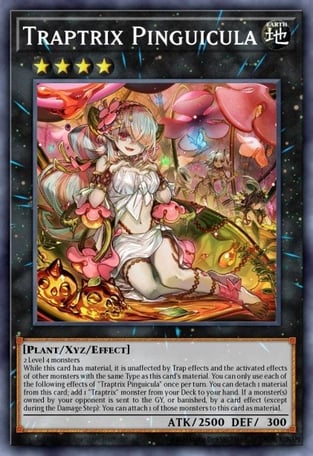
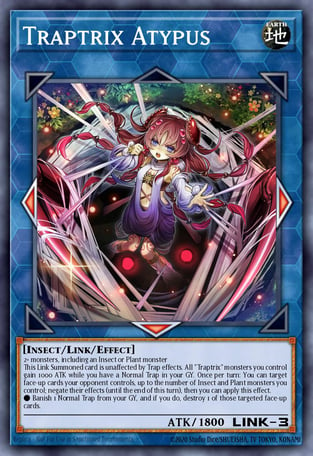
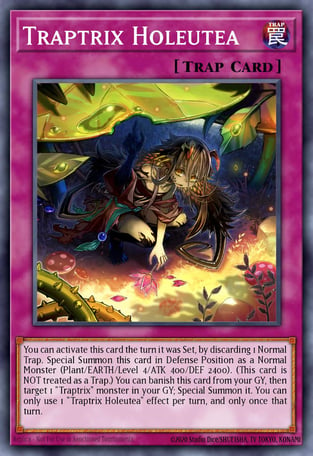
Traptrix
The archetype is centered around using "Trap Hole" and "Hole" cards to activate various effects. Each "Traptrix" is immune to "Trap Hole" cards themselves, while also adding support by tutoring "Trap Holes" or each other. With these traits, a "Traptrix" deck will usually have good opening moves, since they can react quickly against virtually any monster your opponent may Summon.
Note that "Traptrix Atrax" also extends her anti-negation protection to other Normal Traps, so the Deck can also run "Mirror Force", "Dimensional Prison", and even make a temporary one-sided anti-Trap lock using "Trap Stun".
Further useful yet indirect support exists for the archetype through the use of their types. Insect and Plant support cards may be sufficient to satisfy the deck's hunger for competitiveness. An example to this is "Gigaplant", "Beetron" and "Lonefire Blossom". Also the fact that they are all EARTH monsters are useful since "Grandsoil the Elemental Lord" or "Gigantes" can fit in to support them further.
Due to the small number of members within the Archetype, in addition to their reliance on numerous Trap Cards, "Traptrix" is most suitable as an Anti-Meta strategy, by controlling the Field by using Traps and slowly gaining resource via either "Traptrix Myrmeleo", "Traptrix Mantis", and "Traptrix Nepenthes", while at the same time grinding out your opponent's resources. "Traptrix Myrmeleo" can also be splashed in other decks, along with "Traptrix Trap Hole Nightmare" and other "Trap Hole" cards for covering the Deck's weaknesses and giving a little defense boost. "Traptrix Dionaea" can revive a "Traptrix" monster upon being Normal Summoned, which sets up Xyz Summons and can trigger the effect of "Myrmeleo"; it also can set a "Hole" Normal Trap Card from the Graveyard when it is Special Summoned.

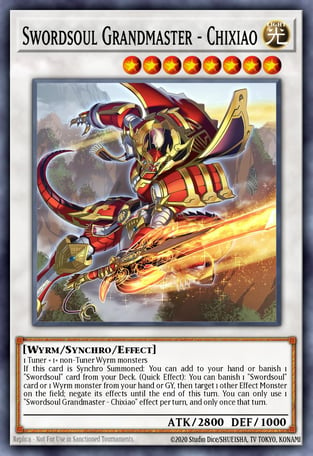
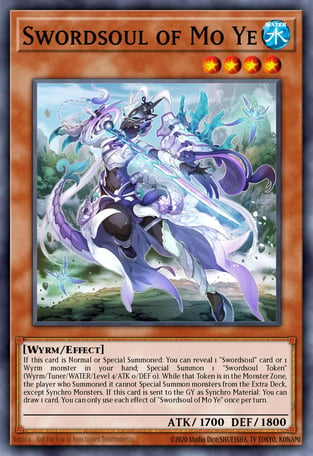
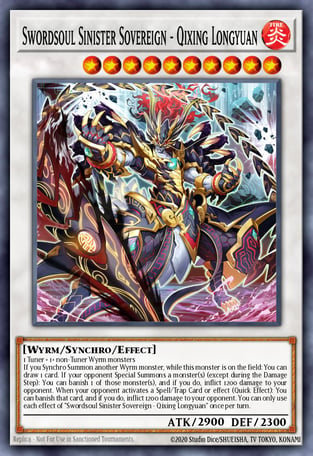
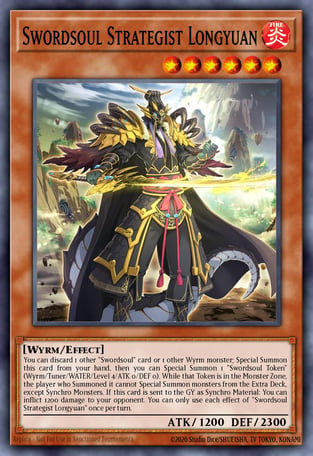
Swordsoul
The "Swordsoul" archetype is focused on Synchro Summoning. Instead of having archetypal Tuner monsters, "Swordsoul" cards instead have effects that Special Summon a Level 4 "Swordsoul Token" Tuner monster, which greatly increases the Deck's consistency compared to other Synchro Decks as there is no longer a need to search for Tuners. All the effects that Special Summon the "Swordsoul Token" apply the restriction that the player cannot Special Summon monsters from the Extra Deck except Synchro Monsters while the Token is on the field, in order to prevent abuse with other Extra Deck Summoning methods.
The archetype has a secondary focus on banishing cards. Several "Swordsoul" cards have effects that require banishing Wyrm monsters or "Swordsoul" cards from the GY as a cost, while other "Swordsoul" monsters banish the opponent's cards as a part of their effects. Synergizing with the former, the "Swordsoul" Spell/Trap Cards have effects that activate when banished; the Spells can modulate Levels, while the Traps can Special Summon a "Swordsoul Token".
The three main combo starters for the archetype are:
- "Mo Ye", who summons a Token by revealing a Swordsoul/Wyrm card from hand
- "Taia", who summons a Token by banishing a Swordsoul/Wyrm card from GY
- "Longyuan", who summons itself and a Token by discarding another Swordsoul/Wyrm card
Because of their need other Wyrm monsters or "Swordsoul" cards as costs, the archetype is best played pure or with other Wyrm monsters.
The archetype's consistency and ceiling is further supported by its Spell/Traps and "Incredible Ecclesia, the Virtuous". "Swordsoul Emergence" is the archetype's searcher Spell that can also search generic Wyrm monsters for more boss monster options, "Swordsoul Sacred Summit" is a revival Spell, "Swordsoul Blackout" is a Normal Trap that trades 2-for-2, and "Incredible Ecclesia" is an additional searcher for "Swordsoul" monsters, making the deck incredibly consistent at starting its combos.
"Swordsoul" can easily make a variety of Level 8 or 10 Synchro monsters with disruptive or suppressive effects, as well as Levels 7, 9, and 11 Synchro monsters with their Spell/Traps' banish Level modulation effect. Their key Extra Deck monster however is "Swordsoul Grandmaster - Chixiao", an Extra Deck searcher able to search or banish any "Swordsoul" card from the Deck when summoned (who also has its own negation disruption effect), which enables further extension by searching for more "Swordsoul" starters or banishing a Trap to make a "Swordsoul Token", or to further strengthen the end board by searching a "Blackout" or "Emergence" (for it to search a generic Wyrm boss monster, like "Archnemeses Protos").
"Swordsoul" has good synergy with the "Tenyi" archetype, as both archetypes are Wyrm-based, supports Synchro Summoning, and the "Swordsoul Token" non-Effect Monster can enable the "Tenyi" Main Deck monsters' effects.

Overview
The current format is so diverse, you may notice we did not manage to fit Branded into our top 5, not that it isn't a good deck. Just the format has so many decks at the moment, it will take a major release to truly establish a meta with the best deck. We have Maze of Memories arriving early March and Cyberstorm Access late March which are sure to shake the meta up!
Thank you for taking the time to read this blog, if there is any other notable decks we did not cover be sure to let us know. The tins have so many decks in the format, it was really difficult to fit them all in one blog post!
*All deck breakdowns were taken from Yugipedia and the all credit goes to them.
